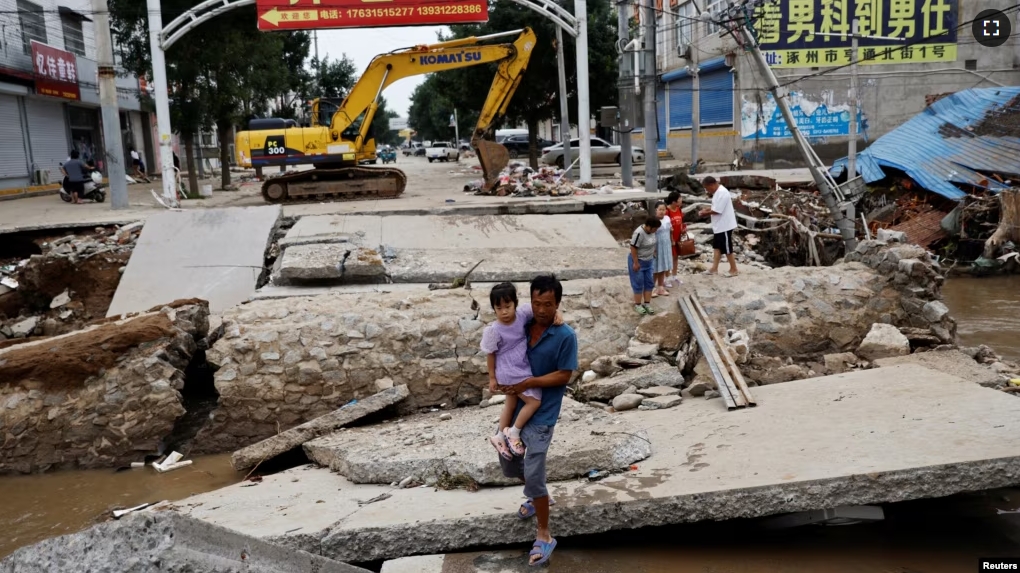A new study suggests that nearly half of major cities in China show signs of sinking.
The study is based on recent satellite data. It estimated that 45 percent of land in China’s biggest cities currently suffers “moderate to severe” levels of sinking.
Researchers say the situation puts millions of people at risk of flooding, especially as sea levels continue to rise.
Writers of the study estimated nearly half of areas around Chinese cities were sinking at a rate of at least 3 millimeters per year. And about 16 percent of land around cities was found to be sinking at a rate of 10 millimeters per year, the researchers say.
The team noted the sinking is linked largely to groundwater extraction and the weight of buildings.
Researcher Ao Zurui and others at China’s South China Normal University in Guangzhou led the study. Results of the research recently appeared in the publication Science.
Ao told Reuters news agency that more than 900 million people live in Chinese cities. The sinking problems, he said, represent a growing threat to people in those areas.
The study notes that sinking already costs China more than $1 billion in yearly losses. And within the next century, nearly 25 percent of coastal land could drop below sea levels. That would leave hundreds of millions of people at high risk of flooding.
China’s northern city of Tianjin has a population of 15 million people. It was identified as one of the worst-hit areas. Last year, 3,000 people had to leave the city after a “sudden geological disaster” linked to sinking. Investigators blamed the problem on water loss as well as the building of geothermal energy systems.
“It really brings home that this is for China a national problem and not a problem in just one or two places,” said Robert Nicholls. He is with the Tyndall Centre for Climate Change Research at Britain’s University of East Anglia. “And it is a microcosm of what is happening around the rest of the world,” Nicholls added. A microcosm is an event or situation that is seen as a small version of something much larger.
Another study published in February found that around 6.3 million square kilometers of land worldwide was at risk of continued sinking. One of the most affected nations is Indonesia. Large parts of the capital Jakarta are now below sea level.
Nicholls said at-risk cities could learn lessons from Tokyo. The Japanese capital city sank by about 5 meters until officials banned groundwater extraction in the 1970s.
Nicholls added that in some places, city officials will have to fight the problem by building systems to prevent flood damage. Of the 44 major coastal cities currently suffering from the problem, 30 were in Asia. That information comes from a 2022 study.
Matt Wei is a geophysics expert at the University of Rhode Island. He told Reuters the problem is directly related to continued development and population growth in cities. It is also related to increased water extraction for human uses.
I’m Bryan Lynn.
Reuters reported this story. Bryan Lynn adapted the report for VOA Learning English.
_____________________________________________
Words in This Story
extract – v. to take something out of something else, especially by using force
geothermal – adj. of or connected to the heat inside the Earth
bring home – phr v. to make clear or emphasize something
